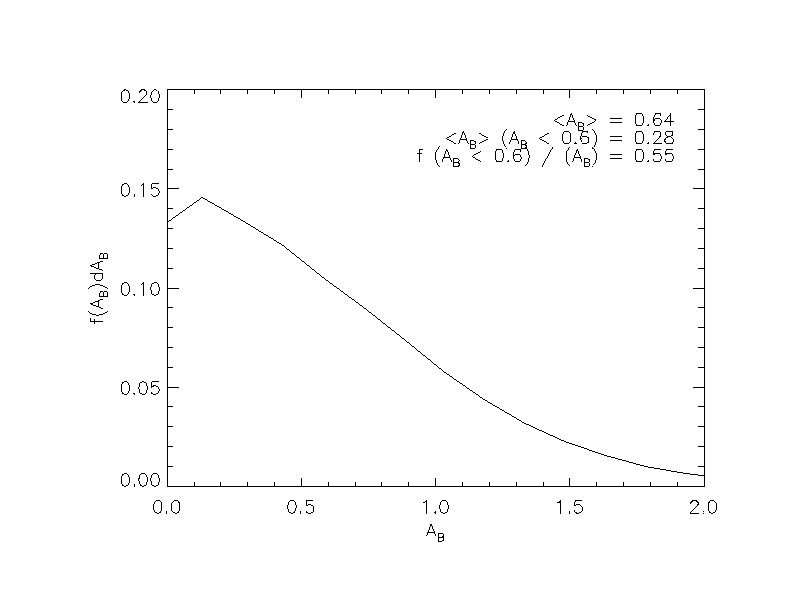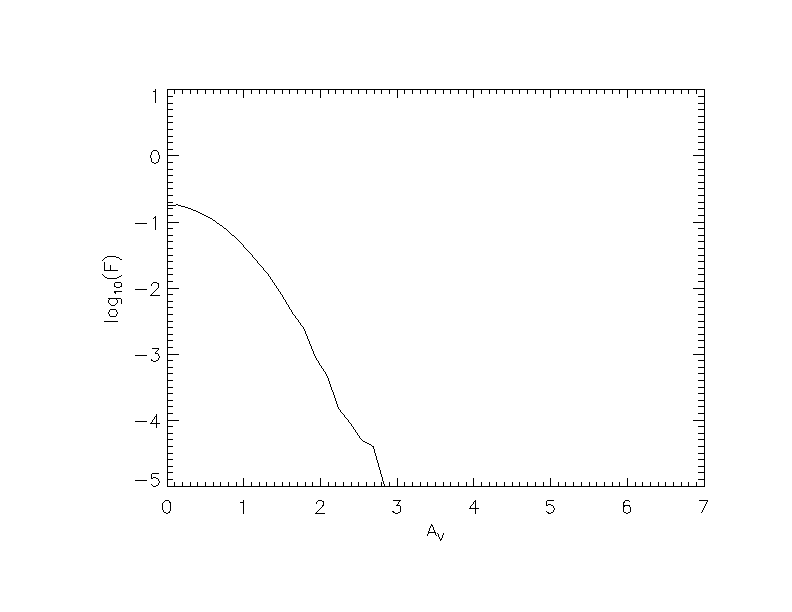
Hatano, Branch & Deaton (1998) came up with a model of extinction in disk galaxies and predicted a distribution for the B-band total extinction as a function of inclination for SNe Ia in the bulges and disks of spirals. The form of the distributions is nothing like that observed, but a comparison is still useful. Their distribution is very peaked around zero extinction with wings out to A(B)=2.0 mags down below the 5% level. The distributions observed tend to be more like a positive valued Gaussian in shape. We used such a Gaussian in our simulations. We compare our distribution with HBD's Table 1 which lists the mean A(B) of their models, the mean A(B) of an extinction limited set (A(B) lt 0.6) and the fraction of objects in this extinction limited set. We use the cos(i)=0.5 model because it comes the closest to the model assuming random disk inclinations (which was not tabulated in HBD).
cos(i) AVG(A(B)) AVG(A(B)) f
0.5 0.58 0.14 0.55 HBD disk SN Ia
all 0.64 0.28 0.55 Our canonical distribution
We see that our Gaussian distribution actually produces a higher average A(B), in both the full and extinction limited set and contains the same fraction in that limited set. We conclude that in comparison the HBD, we are not missing a significant population at higher extinction in our simulations.
Below is a plot of the A(B) distribution calculated from our canonical E(B-V) distribution and R(B) = 4:

Riello & Patat came up with a more realistic model that we can compare to. They plotted host extinction as A(V) for a range of inclinations of their simulated disk galaxies (see their Figure 3). Our A(V) distribution, calculated from our E(B-V) distribution and assuming an R(V) = 3.1, is plotted below. Our distribution seems to match their distribution for disk galaxies with inclinations between 45 and 60 degrees. It is important to note that in their simulations SNe with high extinction (beyond A(V) of 2.0) are extremely rare with log(F) less than -2, or 1%.
